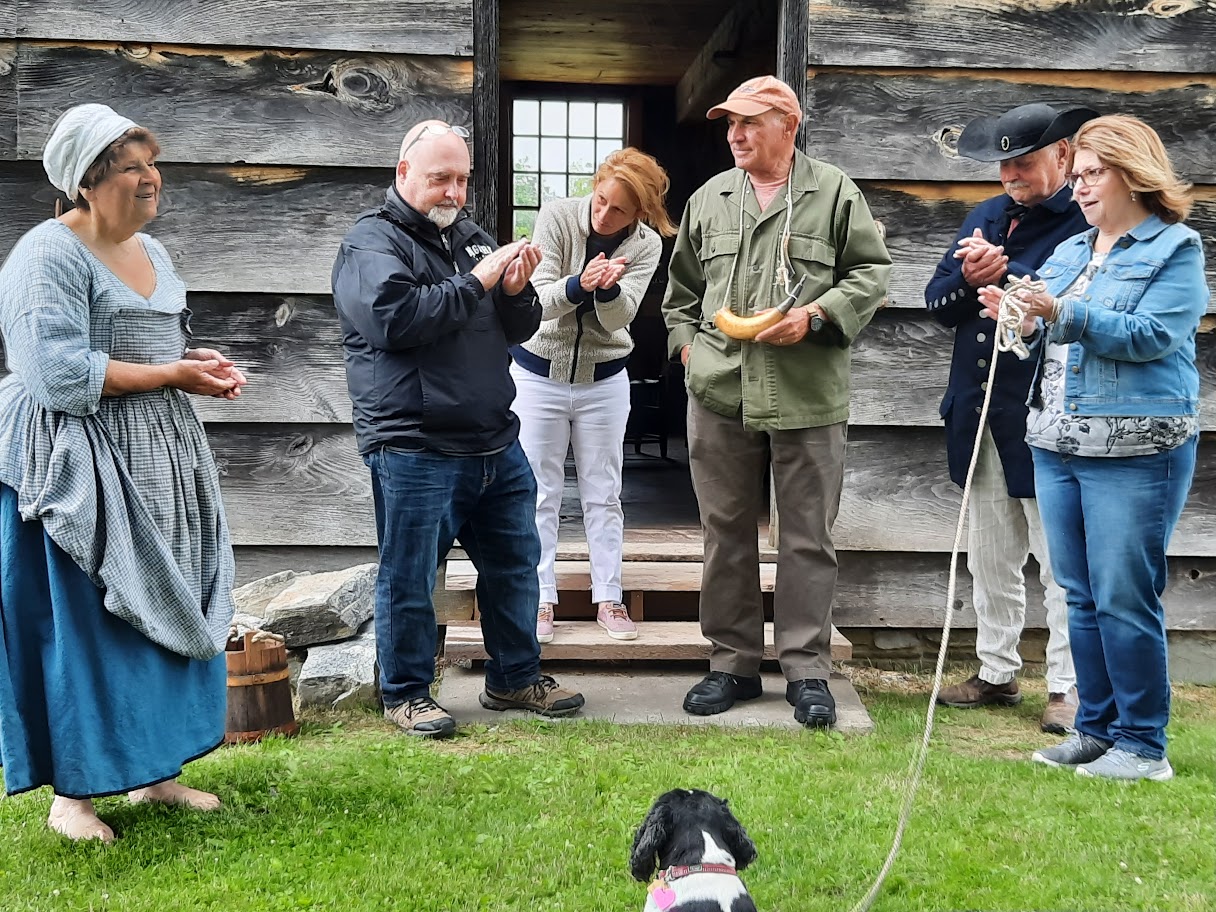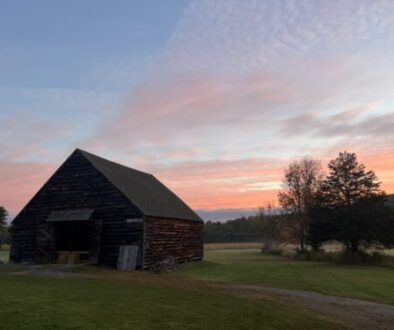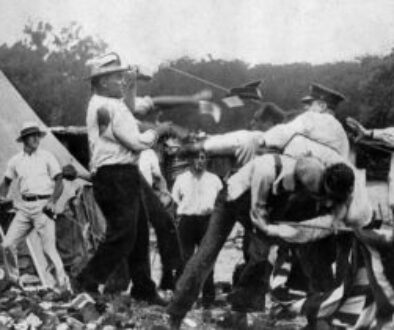Museum Receives Donation of Revolutionary War Era Powder Horn Reproduction
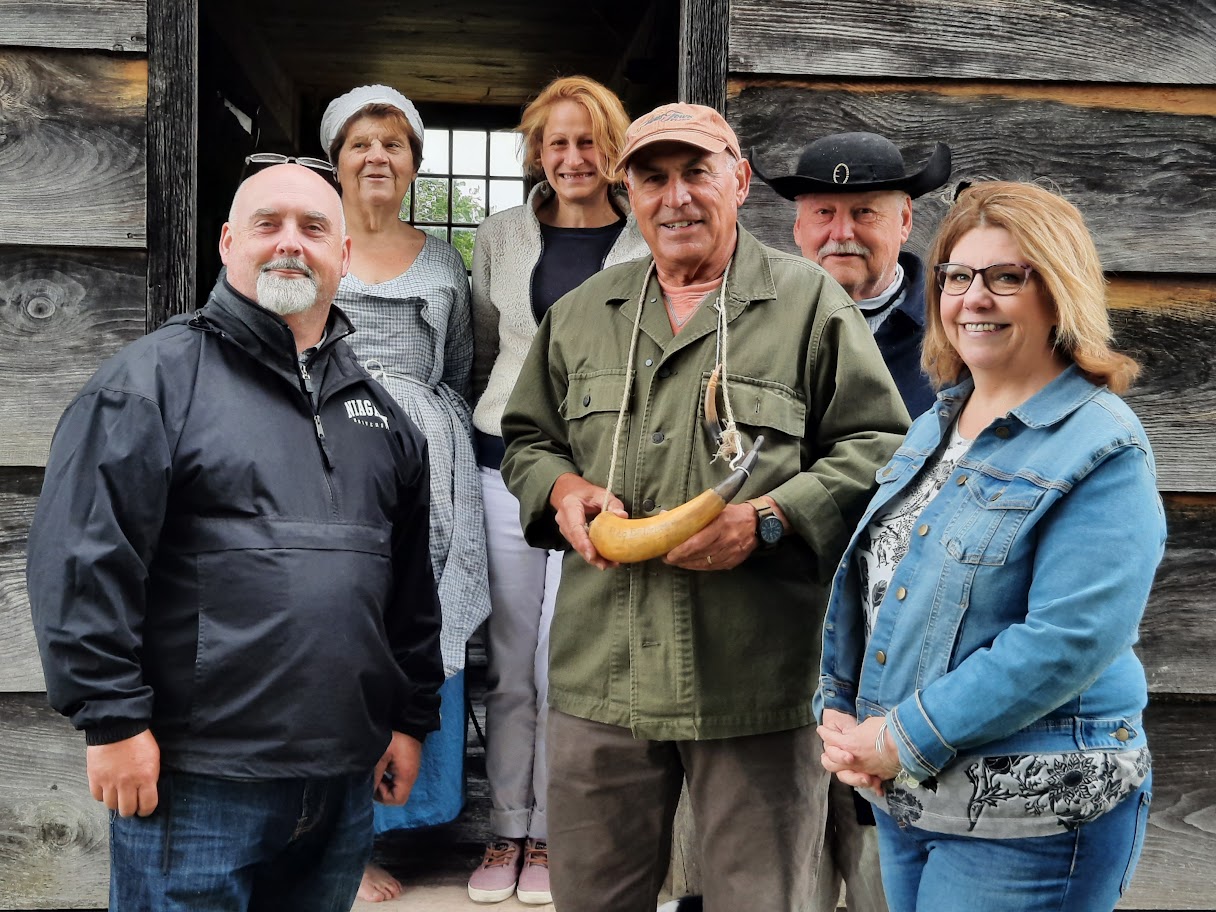
It was with great honor that representatives of the Old Stone Fort Museum and Schoharie County Historical Society accepted the generous donation of a Revolutionary War Era powder horn reproduction during a special ceremony held during the museum’s 2022 season-opening activities on Saturday, June 18.

Skillfully created by horn craftsman Hank Yost, the piece presented reflects the architecture and engraving styles of the Revolutionary period and was specifically designed to represent the life and times of the Hartmansdorf House’s original occupant Philip Bartholomew.
Engraved powder horns, once a convenient and practical way of storing and carrying gunpowder, are now considered an important and significant form of American folk art. Created using cow horns, Yost stated they became the medium on which a colonist or soldier might express himself, document his travels and campaigns, or while away the hours spent on garrison duty.
According to Yost, the mid-18th century was likely the “Golden Age” of American horns, with the French and Indian War (1755-1764) and the American Revolution (1775-1783) engaging large numbers of combatants in lengthy campaigns that included long periods of inactivity during sieges and garrison duty.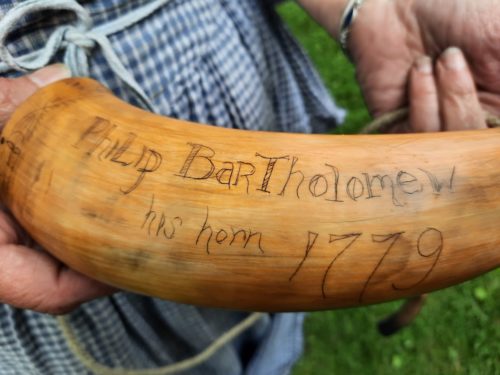
“For the participating soldiers, making and decorating a powder horn served as a way of passing the time, documenting events in his life, and expressing his feelings on his experiences,” said Yost. “The soldier might hire a more artistically inclined friend to make him a horn that served not only a practical purpose but was also a souvenir of his adventures to show his family and friends.”
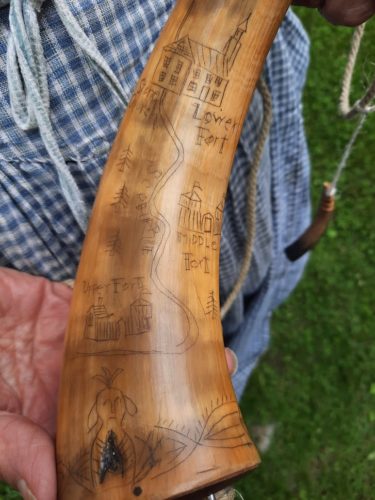 Yost used Bartholomew’s pension record, which indicated he served several enlistments in the local militia, including one in 1779, as the inspiration for his design. He chose lettering which adopted a combination of styles from the late 1740s and the periods surrounding the French and Indian War. The piece includes the commonplace identification of the owner’s name, “his horn”, and the date of the manufacture. The “back” of the horn, said Yost, includes a representation of the three forts which ran along the Schoharie Valley, labeled “Upper”, “Middle”, and “Lower, in the direction of the creek’s flow North to the Mohawk River. The decorative band around the horn’s base is a combination of motifs taken from the original horns of that time and the two engraved Indian figures are a nod to what must have been a constant thought in the minds of the valley’s inhabitants.
Yost used Bartholomew’s pension record, which indicated he served several enlistments in the local militia, including one in 1779, as the inspiration for his design. He chose lettering which adopted a combination of styles from the late 1740s and the periods surrounding the French and Indian War. The piece includes the commonplace identification of the owner’s name, “his horn”, and the date of the manufacture. The “back” of the horn, said Yost, includes a representation of the three forts which ran along the Schoharie Valley, labeled “Upper”, “Middle”, and “Lower, in the direction of the creek’s flow North to the Mohawk River. The decorative band around the horn’s base is a combination of motifs taken from the original horns of that time and the two engraved Indian figures are a nod to what must have been a constant thought in the minds of the valley’s inhabitants.
“We are extremely grateful for this beautiful addition to our collection and the rich enhancement it gives to the interpretation of the historic Hartmansdorf,” said Old Stone Fort Director Melinda McTaggart. ” We sincerely appreciate the level of craftsmanship and the incredible attention to detail which helps tell the story of this valley and the people who lived and fought here.”
